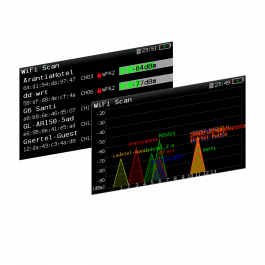

Windows XP is not supported because this tool is based on new Wi-Fi API that doesn't exist on Windows XP.

Network Name (SSID), MAC Address, PHY Type (802.11g or 802.11n), RSSI, Signal Quality, Frequency, Channel Number, Maximum Speed, Company Name, WifiInfoView scans the wireless networks in your area and displays extensive information about them, including: NK2Edit - Edit, merge and fix the AutoComplete files (.NK2) of Microsoft Outlook.Wifi Collector - Collect wireless networks information and their location on Android device.WifiHistoryView - Displays history of connections to wireless networks on your computer.You can either download the installer (.exe) or the portable version as a ZIP file, which is what I’m using. To check the signal strengths of all Wi-Fi networks in your area using Vistumbler, you first need to download the latest version of the app from Github. The latest version of the app is officially available for Windows 10 and earlier but works perfectly fine on Windows 11 as well.

However, the one we will use for this tutorial is the free and open-source app Vistumbler. There are a lot of reliable apps to measure Wi-Fi signal strength on Windows, including Fing ( Free), Wi-Fi Info View ( Free), Wi-Fi Analyzer ( Free), inSSIDer ( Free), and more. For that, you have to resort to third-party apps. While you can gauge your current Wi-Fi signal strength in Windows, there are no native methods in the OS to see the exact strength of all available networks at your location. Method 4: Check Wi-Fi Signal Using Third-party Apps The extended command will filter out the additional info and only show you the percentage that indicates your Wi-Fi signal quality. Doing so will get you the exact same result as the earlier method. You can also use the snippet within the brackets – the same command as the one used in Command Prompt. You will now see the signal quality of your current signal. Now type or copy + paste the following command and hit Enter: (netsh wlan show interfaces) -Match '^\s+Signal' -Replace '^\s+Signal\s+:\s+',''.


 0 kommentar(er)
0 kommentar(er)
